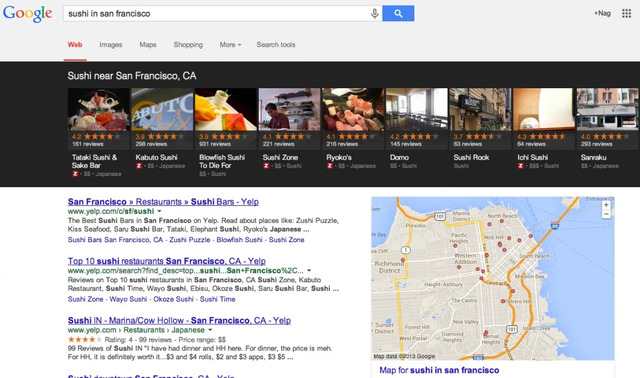Marketer Profile: Mark Fiske is the Vice President of Channel Marketing at Ancestry, a recent BrightEdge customer, a Silicon Valley Search Engine Roundtable founding member and a graduate of Michigan State. Mark has been involved in digital media and search marketing for roughly the last ten years. 
I met with Mark Fiske recently to discuss SEO, content, and marketing. He manages a substantial paid budget and a team that handles acquisition marketing across many different channels, including paid and natural search.
Erik: So what do you think is the biggest change in search?
Mark: I think most SEOs will say the move towards secure and the keyword ‘not provided’ data that one can use to optimize search efforts. Now understanding user behavior is more of an art than a science.
Erik: What's the opportunity in the changes if you know what you're doing?
Mark: With paid search I like to say, “You’re only as good as your four dumbest competitors.” Anybody can bid or pay up to skew the marketplace, so being a good marketer often means making the decision to sacrifice volume. That said, you face your best competitors when it comes to organic. As a result, there is often much more opportunity in being advanced in SEO.
You need every little edge that you can get in SEO, every 2% here and 3% there, to actually effect the change you need to get that position. And if you can actually understand and optimize against what's really working for you, you have a way to overcome those obstacles. Data can be material for your program when you think about where you might be applying manual effort of X today versus where you could be with that extra little bit of data to inform that same effort.
Erik: How easy or difficult is it for you to find SEO talent in the market right now?
Mark: It is incredibly difficult. There is a large amount of SEO talent that I've come across who are the very short-term oriented SEOs where they are really good at gaming a system, but they don't necessarily think about creating long-term value. That has been a big challenge. I think on the flip side, a lot of the individuals who have the right mindset about long-term value sometimes don't necessarily have that perfect mix of product, marketing and development background to enable them to effect change to the key components of SEO and infrastructure needed at enterprise organizations.
Erik: Why do you think there aren't more SEOs in the talent pool?
Mark: I'll say it...I've said it a million times, unfortunately SEO is not particularly sexy. In paid search, it’s a dollar in and you can have your dollar out the next day. SEO requires an individual who has a long-term mentality, who can focus on initiatives with a lot of dependencies, product development, and is patient and willing to take a data-driven mindset and kind of wait it out to see what the results of something are and then implement them more broadly. It is a unique person; when you look at the other roles that someone graduating today could go into, you don't see SEOs on the TV show Silicon Valley, right? You do see other types of marketers and functions. I think there is a perception challenge preventing interest in the space to start.
Erik: Has the move to universal search with the carousel at the top, videos, more pictures on top of the results page influenced any of your organic content strategies?
Mark: We haven't necessarily seen it in our category specifically because the types of queries that individuals might search for in our category are not as topical as the things that tend to trigger the carousel. As a result, we haven't really focused on taking advantage of that specific feature. I've definitely seen it in a lot of other areas like travel with Google's price comparison tools - hotels and things like that. We've been fortunate, but I also think we also need to be very wary because if you look at Google's drive to provide people information at their fingertips and what Google has done in other verticals, such as product shopping or search, there’s a real risk that Google could expand and disintermediate in new categories.

Erik: What kind of an opportunity is there in content? Has that opportunity evolved over the last five years?
Mark: I think a lot of traditional SEOs used to think of content as this is my or your link page or this is what I'm going to use to rank for a specific key word. Today content is more about fostering a relationship with your customer and educating as much as it is about capturing that customer initially.
Erik: So we talked a little bit about HTTPS. What are you doing with having a secure site as part of ‘not provided’?
Mark: There are two layers to that. One is how do you get the data that you need to better optimize your search programs. And the second layer of that is the ranking consideration - Google has fired a shot across the bow, so plan to move to HTTPS. They said this is not a large ranking factor night now, but we expect it will be at some point.
As far as using data to optimize in a world where HTTPS is obscuring a lot more, I think it has underscored the importance of us having really tight keyword and page mappings and understanding what that really means to us.
We look at ranking changes and understand what that means to page-level traffic against a specific key word and monitor page-level traffic with much more regularity and care. You still lose a lot of really meaningful information around keyword clustering and things like that. And those are things we've yet to really crack really as an organization.
Erik: What strategies in regard to external link building and development are you willing to share?
Mark: I still do think the good old fashioned elbow grease approach is incredibly important. If you're doing something and it works instantly, I’d be suspicious. If you're actually taking really great content and forming one-to-one direct relationships with advocates in your space and inspiring them to want to share that content, you're going to have a lot more long-term success. A lot of our effort is spent identifying these valuable influencers and targeted keywords. Not hundreds of thousands at a time but much smaller select groups and then having those discussions in a way that we can inspire and motivate them to share our content.
Erik: Have you ever had an experience with somebody using negative SEO against you, any black hat, any stuff that you needed to disavow?
Mark: Yeah, I think we see a lot of content duplication, content theft, things like that. Not necessarily black-hat SEO. It’s hard to say what the intentions of those individuals were, but there have definitely been situations where we had to disavow the links from stolen content, then file reports to Google to ensure that our unique content can remain our unique content.
Erik: So you don't think anybody's given you bad links to get you a Penguin penalty?
Mark: We haven't seen anything. We monitor webmaster tools and look at our link profile and consistently report on them. I've certainly heard things from other organizations that it is a challenge, particularly in more competitive niches. Fortunately in our space, everyone is very motivated to build the category as a whole and there is less influence from the dark side of the SEO space.
Erik: What are you doing in re-targeting? What's been effective for you?
Mark: Our retargeting playbook is actually pretty straightforward in that it's all about taking what you know about the user, serving them personalized content to the extent you're allowed to, legally and without being creepy, and then really focusing on recency of message and target frequency. What has been impactful is figuring out what is actually meaningful to customers. What they have told you about themselves and then making sure that you reflect that in messaging and then getting that message out there as quickly as possible.
Have a bid strategy that focuses heavily on recency without necessarily throwing away the impressions that might be months out. So focus on your traditional DSP-based buys for the first 90 days, and then look at tools like custom audience lists and others to continue to capture that audience after their cookie might be stale or deleted. As display moves more and more towards the one-to-one world, you'll see media inflation against that type of audience buying. I think right now your high-value business targets are very inexpensive because businesses don't understand how to value that and how to buy those audiences at scale. But as more and more people hop on board I think the market place will kind of normalize and you'll see your 45-old year business executives getting valued a lot more highly then maybe his 16-year-old daughter.
Erik: Have you ever heard of anybody scraping names from social sites to build a list?
Mark: I've talked to a couple of B2B organizations that mentioned that as a tactic. What they'll do is they'll scrape names from social sites. They'll even scrape it directly via the Bing API and get massive lists and using third party tools. You can understand the email address format for a certain domain to generate lists of basically valid emails that they against target companies. And then run custom audience lists against those on Facebook or even use a targeter such as LiveRamp to deliver a very targeted display messaging program.
Erik: And did those people say they got good results from that?
Mark: They were bragging, so it definitely seemed like it was working for them. I think they were smart enough not to go and take that scraped data and use it to for underhanded activities such as unsolicited email. It seems it's been working well for them when used in a limited way for display targeting.
Erik: Have you tried content targeting with cookie matching or cookie pooling against the text and topical data.
Mark: In paid content marketing, I think the two largest paid content marketing providers are Outbrain and Taboola. They're usually at the bottom of articles on news sites such as Fox News and CNN, but they are also present on thousands if not hundreds of thousands of local newspapers and news syndication sites. And those are largely targeted based on the relevance of the content related to the article the user is viewing. If you're viewing in the lifestyle category, someone might see a "ten reasons why XYZ is the ultimate cleaner" or things along those lines.
Erik: How many tests or experiments do you run per year?
Mark: We perform hundreds of tests a year around content engagement and what behavior we see following consumption of that content. So for example, we might test what a piece of content posted to Facebook around Justin Bieber, which is not necessarily aligned with our demographic, versus a historical event, versus any number of different pieces and actually theming that out and then measuring the response rate - not just on a click basis, but what does that do to engagement and other ancillary metrics. And we have seen meaningful engagement differences between those types of content.
Erik: What's your testing tool?
Mark: We use Adobe Target primarily. We've also used Optimizely for maybe a lighter-touch, lower-impact test where we're willing to focus more on upfront metrics. We have a team dedicated to a robust testing practice.
Erik: Are the testers on the digital marketing team? What types of tests do you run?
Mark: Testing falls under product marketing team. This ensures our testing and optimization informs our product marketing strategy. But when you ask what types of tests we're doing I think many organizations go to where the ROI is greatest, and when you look at the bulk of our tests they still are in the sign up or conversion funnels. The types of test that have been impactful for me being on the paid side of the house are much more around ‘how do I get the conversion rate up from paid media enough so that I can afford to buy more media?’ An example is paid search, where a test can improve the amount you are able to bid, raising average position from five to one or two and driving exponential volume as a result.
Erik: What's the biggest test result you've generated this calendar year for a delta on the test?
Mark Fiske: I can't provide specifics, but we have been able to realize 20%+ gains from specific traffic sources, so it was a very meaningful impact to conversation rate. You kind of get used to finding 2% here, 4% there and then when you have a big one like that - it's great.
Erik: How much more important is content development and deployment than it was 2 years ago? Why?
Mark Fiske: I’d argue content development has always been important, but as others realize the importance, it becomes increasingly difficult to break through the clutter. As a result, the infographics commonplace two years ago might not necessarily cut it and a focus on meaningful rich content grows over time.
Erik: Which of the features on the BrightEdge platform do you think you will now be able to leverage?
Mark Fiske: We’re most excited for the more international search capabilities, allowing us to more easily optimize and manage across our portfolio of international sites. That said, we plan to utilize page reporting, dashboards and look forward to new functionalities such as Target integration.


